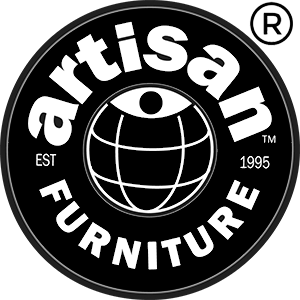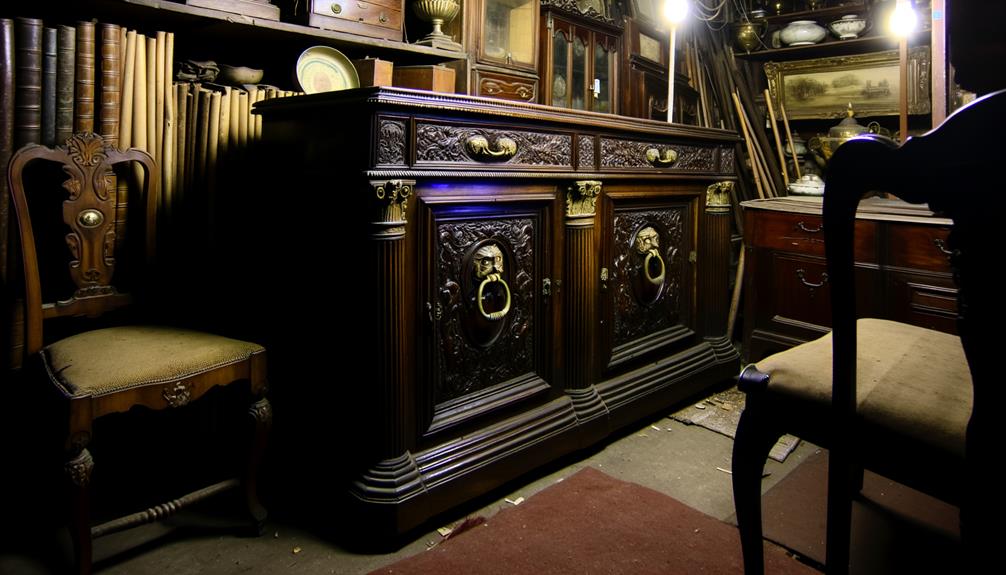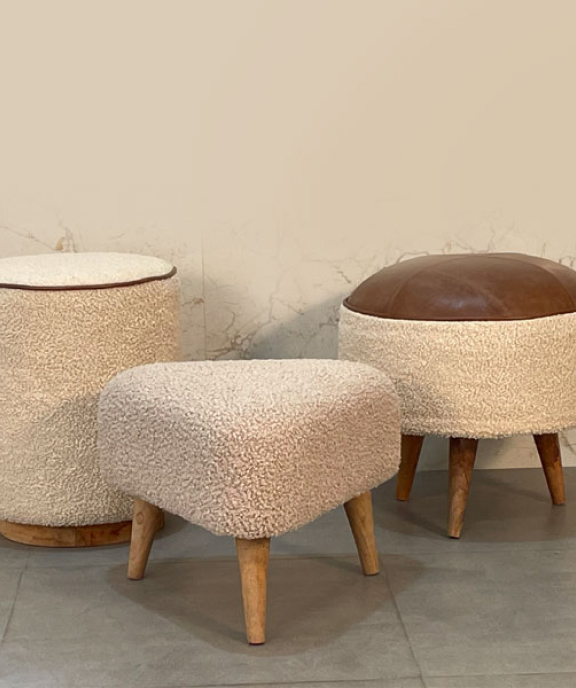Are you ready to explore the world of antique furniture shopping and uncover hidden gems?
As lovers of timeless pieces with rich historical value, we understand the appeal of authentic antique furniture. The thrill of the hunt and the satisfaction of finding the perfect addition to our collection make the journey of antique furniture shopping both rewarding and educational.
But how can we ensure that we're making well-informed choices and investing in genuine pieces?
Join us as we delve into the intricacies of identifying authentic antique furniture, evaluating its craftsmanship and history, and navigating the world of antique dealers and auctions.
Let's embark on this journey together and unlock the secrets of antique furniture shopping, empowering ourselves to make informed and rewarding investment decisions.
Key Takeaways
Are you ready to embark on a journey into the world of antique furniture shopping? This exciting adventure allows us to uncover hidden gems and add timeless pieces with rich historical value to our collection. The thrill of the hunt and the satisfaction of finding the perfect addition make antique furniture shopping both rewarding and educational.
But how can we ensure that we're making well-informed choices and investing in authentic pieces? Let's explore the intricacies of identifying genuine antique furniture, evaluating its craftsmanship and history, and navigating the world of antique dealers and auctions.
Join us as we unlock the secrets of antique furniture shopping, empowering ourselves to make informed and rewarding investment decisions. Together, we will delve into this fascinating realm and discover the beauty and value of antique furniture.
Identifying Genuine Antique Furniture
When shopping for antique furniture, it's important to accurately identify genuine pieces in order to determine their authenticity and value.
One way to do this is by analyzing the wood used in the furniture. Different types of wood were popular during specific time periods, which can help in dating the furniture. For example, oak was commonly used in the 17th century, while mahogany became popular in the 18th century.
It's also crucial to recognize different antique furniture styles. Understanding the characteristics of styles like Chippendale, Queen Anne, or Victorian can provide valuable clues about the age and origin of the piece.
This knowledge is essential in assessing the authenticity of the furniture and ensuring that you're investing in genuine antique items.
Assessing Authenticity
When evaluating the authenticity of antique furniture, it's important to consider several key elements.
First, the type of wood and its age can provide valuable clues about the piece's origin and time period. Different periods often used specific wood types, so understanding this can help determine authenticity.
Second, the craftsmanship and construction style of the furniture can also indicate its age and origin. Unique construction styles were prevalent during different eras, so examining these details can provide valuable insights.
Third, signs of wear and aging are important indicators of authenticity. Genuine antique furniture will show signs of wear, patina, and aging that are consistent with its age.
Consistency and coherence are also important factors to consider. Genuine pieces of antique furniture will exhibit consistent style and construction throughout. Any inconsistencies may suggest alterations or added elements.
Lastly, it's important to look for signs of alterations or added elements. Genuine antique furniture shouldn't have any obvious signs of modifications or additions.
Evaluating the Seller
When shopping for antique furniture, it's essential to evaluate the reputation and experience of the seller. This will help ensure the authenticity and value of the piece you're considering purchasing.
It's important to determine the seller's expertise, as this can provide valuable insights into the authenticity of the furniture. Additionally, assessing the seller's customer service is crucial, as it reflects their commitment to transparency and professionalism.
A reputable seller should be able to provide detailed information about the furniture, including its era, wood, and any potential refinishing. If you have any doubts about the seller's credentials, especially for high-priced purchases, it's advisable to seek a second opinion.
Making Informed Purchases
After thoroughly examining the reputation and experience of the seller, our next step is to focus on making well-informed purchases when shopping for antique furniture.
It's crucial to research the provenance of the furniture to ensure its authenticity and value. By understanding the history and origin of the piece, we can gain insight into its age, previous owners, and any significant events associated with it.
Additionally, it's important to set a budget to guide our purchasing decisions and prevent overspending. When determining a reasonable budget, take into consideration the quality, rarity, and condition of the furniture.
Additional Tips for Antique Furniture Shopping
When it comes to exploring different periods and styles of antique furniture, it's beneficial to visit antique fairs, auctions, and reputable dealers. This allows you to broaden your options and gain valuable insights into the world of antique furniture.
It's important to research styles, sizes, and proportions to understand how different pieces will fit into your space and complement your decor.
Additionally, networking with antique enthusiasts can provide valuable knowledge and tips for finding authentic pieces. Joining online communities and seeking advice from experts can help you make informed decisions and avoid purchasing fake or overpriced items.
Frequently Asked Questions
What Are Some Common Signs of Forgery or Reproduction in Antique Furniture?
When it comes to identifying forgery or reproduction in antique furniture, there are several common signs to look out for. One clue is mismatched pieces, where different parts of the furniture don't seem to fit together properly. This could indicate that the item has been assembled from different sources. Inconsistent style is another red flag. If certain elements of the furniture, such as the design or decorative details, don't seem to match the overall style of the piece or the time period it's supposed to be from, it could be a sign of forgery. Additionally, the presence of added elements is a telltale sign. If there are parts or features on the furniture that look like they have been added later, such as new hardware or alterations, it may indicate that the item has been reproduced or tampered with. It's also important to assess the reputation of the seller. If they have a history of selling counterfeit or replica items, it's wise to be cautious and thoroughly examine the furniture before making a purchase.
How Can I Tell if the Wood Used in the Furniture Is Original or Has Been Replaced?
To determine if the wood used in furniture is original or has been replaced, there are several factors to consider. One of the first signs to look for is consistency in color, grain, and texture. Original wood will typically have a uniform appearance, while replaced wood may have variations or inconsistencies.
Another clue to identify restoration is mismatched patches. If you notice areas where the wood grain or color does not match the rest of the piece, it may indicate that repairs have been made. Additionally, an inconsistent finish or an unnatural smoothness can be signs of restoration.
To verify the age of the wood, it's important to look for wear patterns and signs of aging. Original wood will often show signs of use and patina, such as scratches, dents, or fading. These characteristics can help determine if the wood is original or if it has been replaced.
Are There Specific Markings or Labels That Can Help Identify the Authenticity of Antique Furniture?
There are several markings and labels that can help determine the authenticity of antique furniture. One important thing to look for is the presence of maker's marks, stamps, or labels on the piece. These markings can provide valuable information about the origin and age of the furniture.
When examining these markings, it is important to pay close attention to the details. Look for inconsistencies or signs of tampering, as forgers may try to replicate authentic markings. It can also be helpful to research the specific markings associated with certain furniture makers or time periods to ensure accuracy.
In addition to markings, other factors can also contribute to determining the authenticity of antique furniture. One important consideration is the authenticity of the wood used in the piece. Different types of wood were commonly used during different time periods, so knowing the characteristics of certain woods can help determine if the piece is genuine.
Another factor to consider is the fair market value of the furniture. If a piece seems to be priced significantly lower than similar pieces of the same age and quality, it may be a red flag that it is not authentic. It is important to do thorough research and compare prices before making a purchase.
When dealing with sellers, it is important to be cautious of those who lack transparency or are evasive about providing information. A reputable seller should be willing to provide detailed information about the piece, including its history and any known repairs or restorations.
What Are Some Red Flags to Look Out for When Dealing With Antique Furniture Sellers?
When it comes to dealing with antique furniture sellers, it's important to be aware of potential red flags that could indicate a scam. One key factor to consider is the seller's reputation. Do they have a good track record of satisfied customers? Are there any negative reviews or complaints about their business practices? Another red flag to watch out for is hidden damage. It's essential to thoroughly inspect the furniture for any signs of damage or repairs that may not have been disclosed by the seller. Additionally, it's important to inquire about the restoration history of the piece. Has it been professionally restored? If so, who performed the restoration and what was done? A trustworthy seller should be transparent and willing to provide this information. Inconsistencies in the seller's story or a reluctance to share details can also be warning signs. Ultimately, it's important to do your research, ask questions, and trust your instincts when dealing with antique furniture sellers.
How Can I Determine the Fair Market Value of a Piece of Antique Furniture?
Determining the fair market value of antique furniture requires a comprehensive appraisal process. Factors such as the age, condition, authenticity, and market demand of the piece are carefully evaluated. It is important to seek appraisals from reputable experts and compare similar pieces to make informed decisions. By following these steps, you can gain a better understanding of the true value of your antique furniture.



